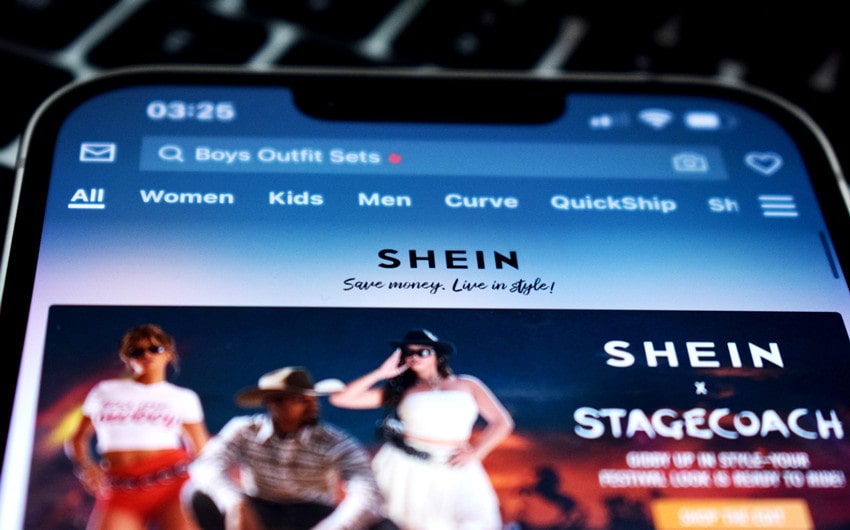Understanding Why Are Clothes On Shein So Cheap
Shein has taken over closets around the world with its trendy styles and jaw-droppingly low prices. If you’ve ever filled your cart with dozens of items for the price of a single designer piece, you’ve probably wondered why are clothes on Shein so cheap compared to everywhere else. It feels almost too good to be true — and in some ways, it is. Behind the endless scrolling and irresistible deals, there’s a bigger story about how Shein operates.
In this article, we’ll explore the real reasons behind those budget-friendly price tags and what they mean for you as a shopper.
Shein’s Business Model Explained
Shein’s success is built on a business model that looks very different from traditional fashion brands. Instead of relying on seasonal collections or high-end boutiques, Shein focuses entirely on speed, volume, and direct-to-consumer sales. By cutting out middlemen, wholesalers, and traditional retail channels, Shein can offer clothing directly from its manufacturers to customers around the world.
What sets Shein apart even more is its agile production system. Rather than creating thousands of units of each style upfront, Shein initially produces very small batches — sometimes as few as 100 pieces. This lets them test which designs are popular before scaling up. If a style sells well, they quickly manufacture more. If it doesn’t, they move on without wasting resources.
This low-risk, high-speed system is made possible through an integrated supply chain powered by data. Shein constantly monitors customer behavior, social media trends, and search patterns to predict what people will want next. In doing so, they eliminate a lot of guesswork — and costly inventory mistakes — that traditional brands face. By focusing on what people actually want, when they want it, Shein keeps costs down and sells products faster than almost anyone else in the fashion world.
Mass Production and Economies of Scale
Once Shein identifies a winning product, the company’s production engine kicks into high gear. Shein’s network includes thousands of factories, primarily located in China, which allows for rapid and large-scale manufacturing. Mass production brings down the cost per unit dramatically. When materials, labor, and logistics are all negotiated at massive volumes, suppliers are often willing to offer significant discounts.
The company’s dominance in numbers plays a big role here. With millions of customers worldwide and tens of thousands of styles available at any given time, Shein can leverage its size to secure deals that smaller brands simply cannot. Fabric mills, sewing factories, and shipping partners all compete for Shein’s business, which gives the company tremendous bargaining power.
In addition, Shein’s products are designed with simplicity and cost-efficiency in mind. Many garments use basic cuts, minimal hardware, and simple designs that are easier and faster to mass-produce. By limiting complex designs or time-intensive details, they ensure that every second saved in production translates into lower prices for the consumer.
The result is a system where producing large quantities at breakneck speed not only satisfies customer demand but also slashes costs, helping Shein keep its price tags impressively low.
Lower Material and Labor Costs
Another major factor behind Shein’s ultra-affordable prices lies in the materials and labor it uses. To keep costs down, Shein often opts for inexpensive synthetic fabrics like polyester, rayon, and spandex blends instead of costly natural fibers like silk, wool, or high-grade cotton. While these synthetic materials are lighter on the wallet, they also come with trade-offs in terms of durability, feel, and environmental impact.
Using lower-cost fabrics allows Shein to create clothing that is attractive and fashionable at first glance, even if the items might not last for many years. For consumers looking for quick, trend-driven purchases rather than long-term wardrobe staples, this trade-off is often considered acceptable.
Labor costs are another sensitive but critical element. Most of Shein’s manufacturing takes place in regions where wages are significantly lower than in Europe or North America. In China and neighboring countries, labor laws and wage standards differ widely, enabling manufacturers to pay lower rates for sewing, cutting, and assembly work. This difference in labor costs contributes heavily to Shein’s ability to price their products so competitively.
However, these practices have sparked ongoing discussions about the ethics behind ultra-cheap clothing, particularly concerning working conditions and fair wages — issues that have increasingly caught the attention of activists and consumers alike.
Minimal Marketing and Retail Overheads
Unlike traditional fashion brands that spend millions on billboard campaigns, magazine spreads, and glitzy runway shows, Shein takes a different approach to marketing. The company relies heavily on digital marketing strategies, especially influencer partnerships and user-generated content on social media platforms like TikTok, Instagram, and YouTube.
By collaborating with micro-influencers and everyday customers, Shein can promote its products organically and at a fraction of the cost associated with traditional advertising. These influencers often share “Shein hauls,” showcasing dozens of affordable outfits in a single video. This approach not only spreads awareness quickly but also builds a sense of relatability and excitement among younger shoppers.
Additionally, Shein operates almost entirely online, meaning there are no expensive storefronts to maintain, no sales staff to pay, and no retail leases in prime shopping areas to fund. Operating exclusively through its app and website allows Shein to keep overhead costs minimal and focus resources on inventory, logistics, and customer service.
Every dollar saved on marketing and retail operations helps Shein pass savings along to customers. In an industry where brand image often inflates prices, Shein’s low-key, internet-first strategy allows it to stay affordable while still reaching massive global audiences.
Fast Fashion Strategy and Short Product Lifespan
At the heart of Shein’s model is a fast fashion strategy taken to the extreme. Traditional fast fashion brands like Zara or H&M might take a few weeks to move from design to store shelf. Shein often does it in as little as a few days.
This rapid turnaround means Shein can respond to trends almost in real time. If a celebrity is spotted wearing a new style on Monday, Shein may have a similar piece available for purchase by Friday. This speed not only keeps customers engaged but also encourages a culture of constant buying, where shoppers feel compelled to grab new styles before they disappear.
However, speed comes at a price. The majority of Shein’s products are not designed for long-term durability. The emphasis is on affordability and immediacy rather than quality and longevity. Many consumers view Shein purchases as disposable — something to wear a few times before moving on to the next trend.
This short product lifespan is intentional. It fuels repeated purchases and ensures that customers return often to refresh their wardrobes. While it’s a smart business tactic, it also raises questions about sustainability and waste, issues that are becoming harder to ignore as fast fashion’s environmental impact grows more serious.
Controversies and Ethical Concerns
While Shein’s prices are appealing, the company has faced significant criticism over the ethics behind its operations. One of the most common concerns is labor practices. Investigations and reports have suggested that some Shein suppliers operate under poor working conditions, including long hours, low pay, and inadequate labor protections.
There have also been allegations of intellectual property theft, with smaller designers accusing Shein of copying their designs without permission or proper compensation. These accusations highlight a pattern of prioritizing speed and profit over respect for creative ownership.
Environmental concerns are another major point of contention. The mass production of cheap clothing contributes heavily to textile waste, and the use of synthetic materials like polyester increases the fashion industry’s carbon footprint. Critics argue that Shein’s business model encourages a throwaway culture that is harmful to the planet, exacerbating pollution and overconsumption.
In addition, the brand has been called out for its lack of transparency. Unlike some other fast fashion companies that have made efforts to disclose information about their supply chains and sustainability goals, Shein has historically been more secretive, making it difficult for concerned consumers to get clear answers about where and how their clothes are made.
Despite these controversies, Shein’s popularity continues to soar. Many shoppers, especially younger ones, find the lure of trendy, affordable clothing hard to resist. However, growing awareness of the ethical and environmental implications is prompting some consumers to think twice before filling their carts — and pushing Shein to address some of these criticisms more openly as the demand for responsible fashion continues to rise.

